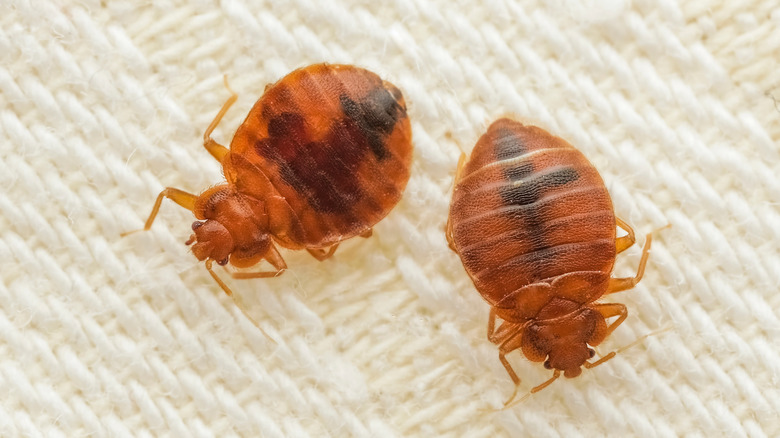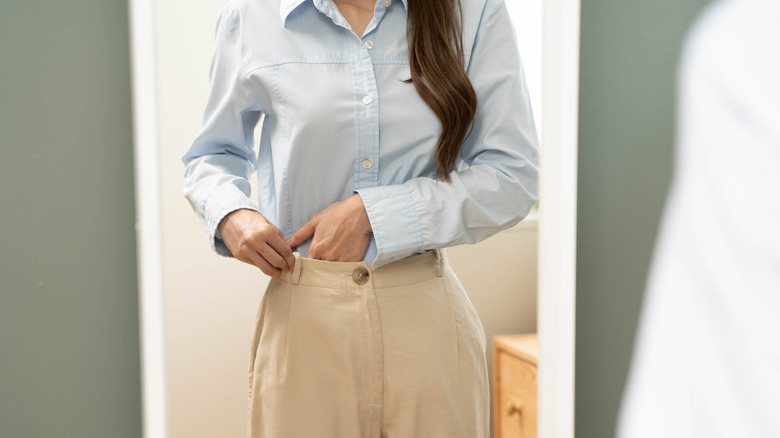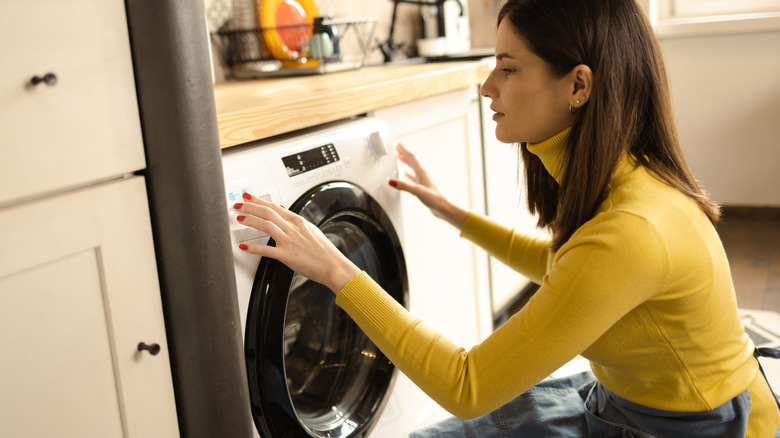How To Prevent Bedbugs From Work From Showing Up In Your Home
You don't have to live in one of the most bed bug-infested areas in the country to know what kind of damage these pests can do. They may be tiny, but these blood-sucking insects strike fear into the hearts of homeowners who understand just how difficult a bed bug infestation is to get rid of. While bed bugs are usually a concern when traveling, staying in hotels, and visiting others' homes, it's not uncommon for non-residential settings like corporate offices, government buildings, schools, and even stores to become breeding grounds for them, which means you may have to worry about bringing bedbugs from work home with you. If you don't want to wind up with a full-blown infestation in your house, it's essential to prepare for work properly, including choosing your outfit and accessories carefully and storing your belongings safely at work, and undress carefully when you return home to keep bedbugs from getting into your home.
To avoid bringing these pests from work into your home, it's crucial that you're able to identify them. Bed bugs are small, red-brown insects with flat, oval bodies. Adults typically range from 3/16 to ¼ inch long. While they don't fly, they crawl extremely fast over floors and walls. Fortunately, bed bugs aren't likely to spread disease, but their bites can cause itchy, red welts and allergic reactions in some people.
Take bed bug precautions when heading to work
Bed bugs definitely make the list of bugs you don't want living in your home, and one of the easiest ways to keep these pests from hitchhiking their way from your place of employment to your house is to wear clothes that make it easy to spot them. Since bed bugs are dark, wear light-colored clothing to work. While they are tiny, you'll be able to spot the dark specks on your clothes pretty easily. You don't want to give the little pests anywhere to hide on your clothing either, so opt for items with few pockets, cuffs, or other decorative details that might conceal them.
For the same reason, it's best not to wear accessories like scarves or hats. Limit the items you bring into work, like bags, as well. Disposable bags are often the best option, but those that can be machine-washed and dried will also work well. At work, don't keep personal items on the floor, where bed bugs can easily crawl into them. Instead, hang your coat, bags, and other accessories from hooks or in a closet, or place them on tall furniture close to a light source, such as a filing cabinet.
Bed bugs usually prefer upholstered surfaces because there are more hiding places. Avoid sitting on sofas and upholstered chairs at work. Instead, sit on hard wooden or plastic chairs, which are less likely to harbor any hiding bugs.
Undress carefully to avoid bringing in bedbugs from work
One of the biggest mistakes everyone makes when dealing with bed bugs is failing to properly contain them after possible exposure. That's why taking care when undressing at home may be even more important than being vigilant about bed bugs at work. If any insects are on your clothing, you must prevent them from crawling off and finding a spot to hide inside your house. Consider bringing a change of clothes if concrete evidence of bed bugs has been found at your workplace. When you change out of the items you've worn for work, place them in a sealable plastic bag until you can launder them.
If you're concerned about bed bugs at work but aren't aware of an active infestation, remove your clothes as close to your home's entrance as possible. The garage is an ideal place to undress, but leave shoes, bags, and other accessories outside. It's also a good idea to put your clothing directly into your washing machine after undressing. If you can't, place your clothes in sealable plastic bags to keep the bugs contained.
Wash your items as soon as possible, and dry them according to the label instructions. However, once they are fully dry, put them back in the dryer on the highest heat setting for 30 minutes. Exposure to temperatures of 120 degrees and higher has been proven to kill bed bugs, so this extra drying ensures that all the insects are dead.


